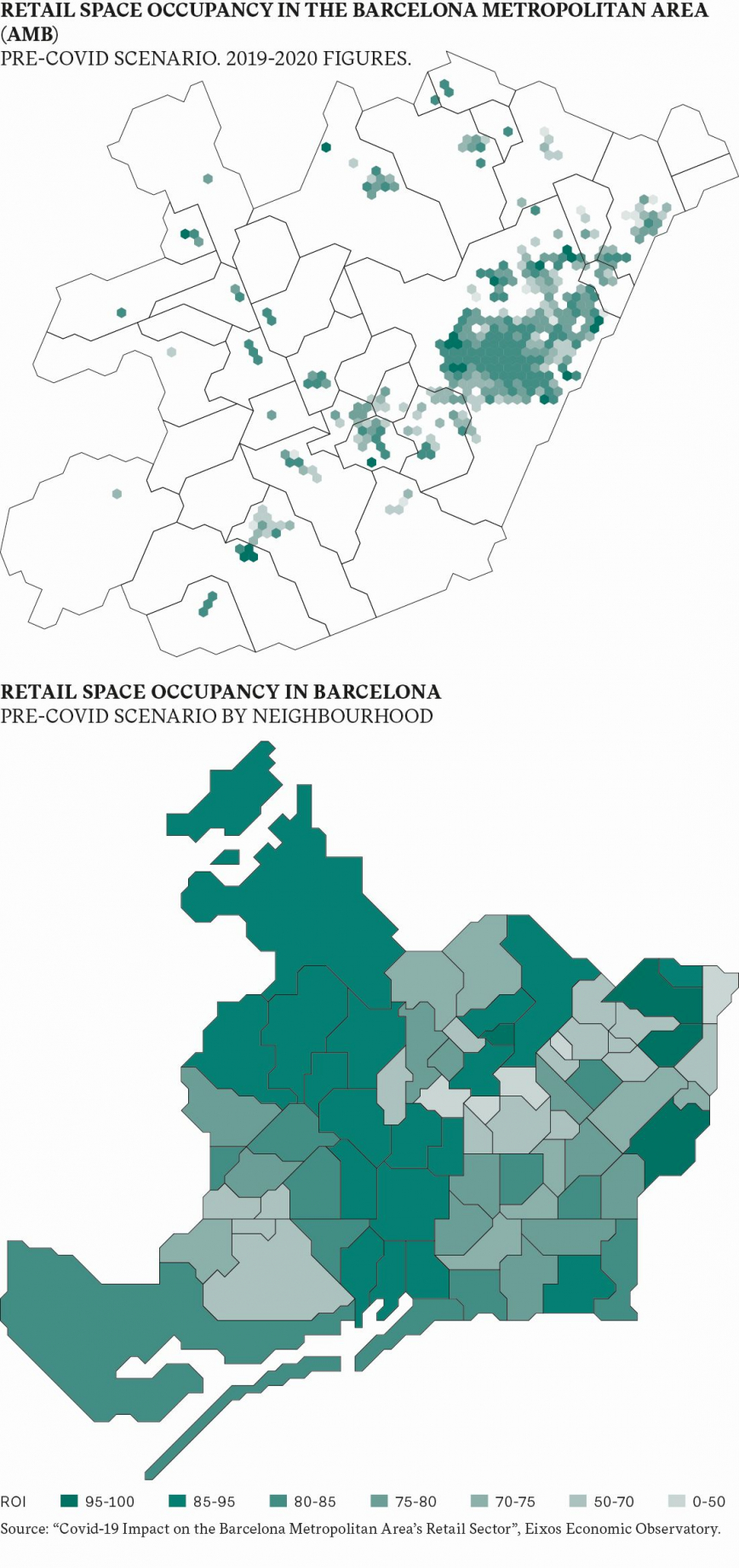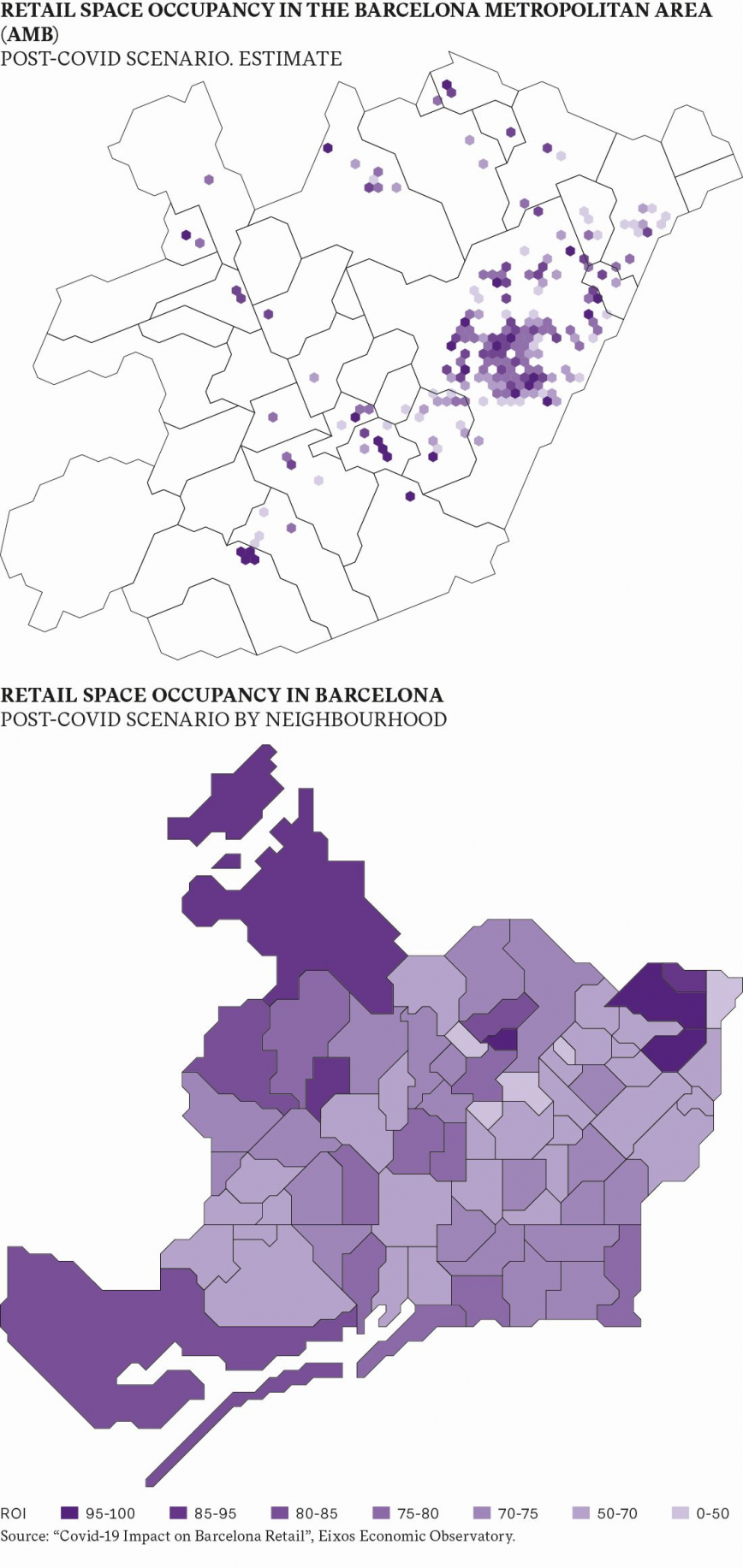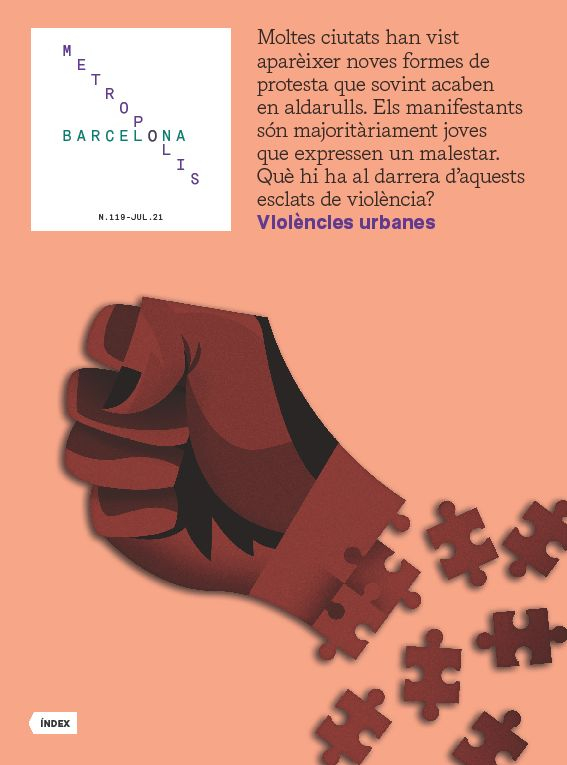The economy on lockdown
- Open data
- Sep 21
- 8 mins
Albert Martin Disseny (Storydata)
The impact of COVID-19 goes far beyond the realm of healthcare. From tourism to local trade, to the labour market and culture, the downturn of the economy is unprecedented, especially bearing in mind that this crisis has spilled beyond all existing borders. Now the shutters (albeit not all of them) are being opened again, and stations and airports are starting to timidly recover the rhythm of previous years.
The restrictions brought about by the pandemic have affected many businesses. The economy is likely to recover, but the loss of small businesses and jobs, which has affected thousands of people, is irreversible.
Tourism wiped out
“Barcelona Airport breaks the record with 52.9 million passengers in 2019.” This was the headline of dozens of media outlets to convey the relentless flow of commercial flights the city was receiving in early 2020. By mid-March, however, everything had changed.
Barcelona Airport was brought to a standstill, logging an all-time drop due to the cancellation of most operations. In April 2020, the first state of alarm saw a total of 25,307 passengers, while the same month in 2019 recorded a figure of more than four million.
Since then, the decline has been widespread in both the airport and the port, as well as in the number of registered travellers and overnight stays. Idescat, the Statistical Institute of Catalonia, shows that, in late 2020, the income earned from tourist spending in Catalonia as a whole was –82.9%. The latest figures (March 2021) fell to –91.3%. However, these drops in the number of travellers and overnight stays are owing to reduced mobility, and not on account of a structural crisis in the global economy. Hence, as the figures show, recovery is beginning to be felt thanks to the easing of the restrictions.
A year without business tourism
Last year, the global event industry faced the biggest challenge to date. By April 2020, 72% of countries had closed their borders completely.
The cancellation of the Mobile World Congress in February heralded the mass cancellation of accommodation bookings on account of the interruption to trade fair and congress activity. According to the Barcelona Tourism Observatory, almost 15% of trade fairs and congresses were cancelled and the remaining 85% were postponed. It would not be so consequential to the economy if it were not for the fact that the business tourist generates twice as much economic impact as the leisure tourist.
Overnight stays also dropped, albeit less sharply. According to the Observatory, the number of hotels and rooms available fell by one third, and was equivalent to the accommodation available in the city in the mid-1990s.
Keeping the affected sectors afloat
One in three people affected by a temporary layoff in 2020 worked in the hospitality sector, according to figures from the Barcelona Municipal Data Office (OMD). Hospitality (100,716 workers), trade (43,711 workers) and culture and entertainment (32,136 workers) are the sectors that have needed a bigger injection of resources in the form of government aid to hold onto their workforce. Nonetheless, aid has not stopped unemployment figures from skyrocketing since the lockdown.
Unemployment peaked during the summer
The city had not witnessed a rise in unemployment for almost six years. What’s more, the increase was sharp: from March to August 2020, Barcelona’s unemployed population grew by more than 20,000 people. June was the most critical month, with a variation of +50%, reaching almost 93,000 job seekers. Figures for the first quarter of 2021 saw a slight improvement thanks to the easing of restrictions, but the figures remain worrying.
Nevertheless, to ascertain how many jobs have been wiped out by the pandemic, we will have to wait for the end of temporary layoffs and also determine the number of Social Security affiliates, which has remained stable since early 2020 thanks to the government aid granted.
CHRONOLOGY OF COVID IN THE CULTURAL SECTOR 2020
14 March
Suspension of all cultural activities.
May
Cultural amenities at 30% capacity.
June
Live shows and cultural amenities at 50% capacity, opening of bookshops and galleries.
18 July
Shutdown in the municipalities of the Barcelona Metropolitan Area.
21 July
Outdoor seated shows.
22 September
Cultural amenities at 70% capacity.
15 October
Cultural amenities at 50% capacity.
29 October
Total shutdown, with the exception of libraries and cinemas.
21 November
Resumption of opening.
A final blow to culture
The entertainment sector has been hit badly by the pandemic since it was already in a critical state. The sharp drop in households’ culture consumption, as well as the lack of investment in advertising and sponsorships, has led to a fall in the number of admissions to the city’s cultural amenities (between 50 and 85%), in theatre (–44.5%) and cinema revenue (–74.1%), according to the report “Diagnosi per un pacte cultural” [Appraisal for a Culture Agreement] by ICUB (the Barcelona Institute of Culture). The sectors that require the public’s presence have been the hardest hit.
The Institute of Culture has granted extraordinary aid worth 4.3 million euros. However, according to this report, 1.9 million will be added in 2021.
Closure of retail spaces
What shall not be so occasional or fleeting, as the report from the Eixos economic observatory points out, is the closure of shops in the city of Barcelona. According to figures published by this economic observatory – which already analysed and predicted a post-COVID scenario for the retail sector during the 2020 lockdown –, low employment and the consequent closure of shops could become critical in the city’s most touristic neighbourhoods.
To envision a hypothetical post-COVID scenario, Eixos differentiates the shops that have the most difficulties in reopening: bars and restaurants, clothing and shoe stores, and retail spaces dependent on tourism. It established a retail occupancy index, the ROI, which should exceed 80%. Before the onset of the pandemic, the average in Barcelona had an ROI of 80%. There was more commercial activity in the city’s tourist districts (such as the Gothic Quarter, Barceloneta, Vila Olímpica, Gràcia and the Eixample and Les Corts area) and in the more peripheral areas (Horta, El Carmel, La Clota, Bon Pastor, Trinitat Nova and Torre Baró). The latter three neighbourhoods showed an occupancy rate of almost 100% before the lockdown.
The post-COVID scenario forecast by Eixos shows that neighbourhoods such as the Gothic quarter, El Raval and Sant Pere, Santa Caterina and La Ribera would be well below this threshold that, if below 70%, is considered a critical point of severe desertification. All of Barcelona’s districts would have been affected, but especially the hub corresponding to Ciutat Vella – the Eixample – Les Corts.
In contrast, the impact would have not been so marked in peripheral areas, as reduced mobility led to (and continues to lead to) an increase in hyperlocal consumption. Some neighbourhoods such as La Clota, Torre Baró, Trinitat Nova and Vallvidrera and Les Planes have maintained the retail occupancy of their shops. But the main reason is, in the words of David Nogué, founder of Eixos, “the low presence of non-essential shops in these areas, and higher presence in central areas and the main commercial hubs (clothing stores, restaurants, etc.)."
Teleworking has also harmed downtown areas, as all food businesses depended on people working in the centre’s offices and businesses, or going shopping there, besides tourism.
Although the study was carried out during the first months of the pandemic, David Nogué corroborates the most moderate forecasts they made in 2020. This implies the closure of between 10 and 30% of economic activities in the city’s business premises. However, this post-COVID scenario depends on the actions of public institutions that, as Nogué points out, “have the power to transform the commercial landscape”.



The rise of macroeconomics
The COVID-19 pandemic has taken a significant toll on the evolution of Barcelona’s GDP. Overall, according to the OMD, GDP dropped by –10.2% compared to 2019, with the hospitality and trade sector seeing the biggest fall (–17%). However, financial, real estate and professional activities, as well as the public sector, have not been as hit as hard. Although the figure fell sharply in the third quarter of 2020, by the end of the year there was already a slight recovery to pre-COVID levels, especially in the industrial sector.
Another pertinent economic indicator is the creation of new companies, which in April 2020 fell by 89.5% compared to the previous year, with the setting up of only 74 companies, a figure that exceeded the decline in the years after the crisis of 2008. However, during the final months of 2020 and the early months of 2021, pre-COVID figures have been recovered.

Aid at an all-time high
The impact of the pandemic has also been felt by organisations such as the Barcelona Food Bank, which claims that the crisis has broadened the spectrum of food assistance applicants: 30% of aid applicants during the first year of the pandemic had never needed to apply for assistance until now. In addition, in June 2020, the number reached an all-time high: more than 160,000 people were granted aid. The highest increase compared to 2019 was during the month of August, when the number of food aid applications almost doubled, soaring from 30,603 to 58,510.
The newsletter
Subscribe to our newsletter to keep up to date with Barcelona Metròpolis' new developments





